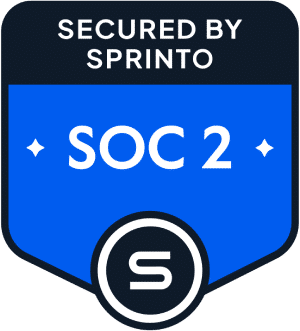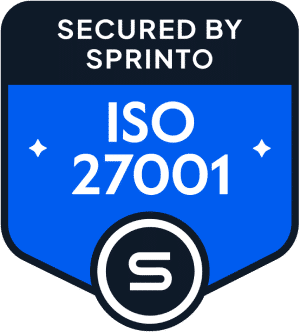Get the latest & greatest cybersecurity insights straight to your inbox:




HOME > The InfoSec Guide to HIPAA Compliance
Most people think of healthcare providers’ offices as a sanctuary where the only threat to safety is a virus, cavity, or an injury that can be healed with the proper medical care. However, patients and providers have another threat to worry about in cybercriminals, who certainly don’t need health insurance to visit the office computers.
In fact, the healthcare industry and its partners are the biggest victims of data breaches, with studies showing that 79% of all breaches occur in this sector. With the average cost of a healthcare-related data breach reaching $7.13 million (above the global average for all industries), it’s clear that this problem needs a cure. That’s where HIPAA comes in.
The Health Insurance Portability and Accountability Act of 1996 (HIPAA) is a U.S. regulation that protects sensitive health data from being disclosed without a patient’s consent or knowledge. More importantly, it also helps prevent data breaches and other cyber crimes through stringent privacy and security standards that organizations handling health data must comply with.
The Health Insurance Portability and Accountability Act is pivotal in the healthcare industry. It encompasses a series of guidelines that healthcare organizations must adhere to demonstrate their commitment to safeguarding patient information, often referred to as ‘Protected Health Information’ or ‘PHI.’
The essence of HIPAA compliance lies in its comprehensive framework, which serves as a roadmap for fulfilling these regulatory obligations. Its primary objective is to oversee the careful management of sensitive patient data. Through HIPAA, the healthcare sector and its dedicated workforce are equipped with the necessary tools to uphold the highest confidentiality and data privacy standards.
The HIPAA framework not only safeguards patient information, but also nurtures trust between healthcare providers and those who rely on them for their well-being. It empowers healthcare professionals and organizations with the knowledge and practices to ensure that patient data remains confidential and secure at all times, which fosters a culture of cybersecurity in healthcare data management.
HIPAA compliance is built around three fundamental pillars:
This rule focuses on safeguarding patient information (PHI) by appointing a Privacy Officer, creating privacy notices, and granting patients control over their health data.
HIPAA’s Security Rule safeguards electronic PHI from unauthorized access through encryption, data backup, and access controls.
In the event of a data breach, this rule mandates notifying affected parties promptly and taking measures to prevent further data loss, ensuring transparency and data protection.
HIPAA compliance primarily applies to entities in the healthcare industry to ensure the security and privacy of patient health information and to meet legal requirements. Specifically, it is for two groups:
HIPAA safeguards the broad category of health-related data, protected Health Information, encompassing electronic, written, and spoken information. It includes data created, received, stored, or transmitted by healthcare providers.
PHI typically falls into two categories:
HIPAA violations refer to any actions, practices, or circumstances that breach the rules and regulations as delineated in the Health Insurance Portability and Accountability Act. These violations typically involve the mishandling or unauthorized disclosure of PHI.
HIPAA violations can take various forms, from inadvertently sharing patient information with unauthorized individuals to failing to implement adequate security measures to protect PHI. These violations can have serious consequences, including legal and financial penalties.
Three critical things to know about HIPAA violations are:
Follow these seven essential steps to achieve HIPAA compliance effectively:
A HIPAA compliance checklist serves as a comprehensive guide detailing the actions your organization must undertake to fulfill the act’s requirements. It offers several essential benefits, including:
Perhaps most importantly, the use of a HIPAA compliance checklist serves as a proactive measure to prevent HIPAA violations and the associated legal and reputational consequences.
Download your free HIPAA compliance checklist at the link below.
Achieving compliance with the intricate regulations of HIPAA can be a formidable challenge for healthcare organizations. 60% of covered entities recently surveyed lacked confidence in their ability to pass a HIPAA audit.
HIPAA compliance software serves as a valuable tool for healthcare institutions and service providers, assisting them in adhering to HIPAA’s stringent privacy and security regulations. Its core functions encompass applying HIPAA principles to prevent data breaches and unauthorized disclosures of Protected Health Information (PHI). It streamlines and expedites the processes related to risk management and compliance.
HIPAA compliance software is relevant and beneficial for any organization or healthcare provider to which HIPAA compliance applies. This includes both Covered Entities (such as physicians and health insurance companies) and Business Associates (third parties entrusted with managing electronic PHI).
It’s important to distinguish between HIPAA compliance software and HIPAA-compliant software. The former is a tool designed to facilitate adherence to HIPAA regulations, ensuring comprehensive compliance. Conversely, the latter is software used for healthcare information purposes (e.g., transmitting medical records) and is specifically crafted to meet HIPAA’s rigorous data protection standards.
Various types of HIPAA compliance software are instrumental in assisting healthcare organizations in meeting the multifaceted requirements of HIPAA:
Incorporating these various types of HIPAA compliance software can significantly enhance an organization’s ability to navigate the complexities of HIPAA regulations and maintain the highest standards of data security and patient privacy.
HIPAA compliance software provides several advantages, including:
HIPAA compliance software offers a range of crucial features to help healthcare organizations maintain regulatory adherence and safeguard patient data. Some key features to look for in a compliance solution include:
To select the most suitable HIPAA compliance software for your healthcare organization
Here are eight of the top solutions available to help your organization become compliant with HIPAA:
Equipping healthcare workers with HIPAA training empowers them to safeguard patients’ protected health information (PHI). This training covers crucial areas like understanding patient privacy rights, identifying potential cybersecurity threats, and implementing robust data security measures.
Since human error is a significant factor in cyberattacks, training healthcare personnel to recognize potential cybersecurity vulnerabilities creates a strong organizational defense, minimizing data breaches and other PHI leaks.
This critical training is required for employees of all covered entities and any PHI-handling business associates.
HIPAA requires training covering:
The HIPAA and Privacy Act Training Challenge Exam assesses participants’ grasp of HIPAA’s Privacy and Security Rules, and their application in real-world scenarios. It typically covers patient rights, the minimum necessary standard for information disclosure, proper handling and reporting of PHI breaches, and the obligations of covered entities and business associates under these laws.
Often mandated for healthcare professionals, this exam is administered in hospitals, clinics, insurance companies, and other entities handling protected health information. By demonstrating a foundational understanding of HIPAA and Privacy Act requirements, individuals successfully completing the exam contribute significantly to compliance and safeguarding patient privacy. Additionally, the exam identifies areas where further review might be beneficial for individual learning.
To ensure thorough understanding of privacy regulations, effective HIPAA and Privacy Act training delves into three key areas:
By mastering these crucial elements, healthcare organizations can cultivate a strong culture of security and privacy, allowing them to navigate the complexities of HIPAA regulations.
To help you prepare for the HIPAA and Privacy Act Training Challenge Exam, we’ve collected twenty example questions and answers, similar to those on the actual Challenge Exam.
HIPAA’s Security Rule stipulates that covered entities and business associates must carry out security awareness and training programs for their workforce. Organizations are expected to provide training to ensure that staff are aware of security policies and procedures, potential threats to PHI, and how to respond to security incidents. The emphasis is on ensuring that employees are informed, vigilant, and capable of protecting patient data from potential threats.
To meet these requirements effectively and bolster HIPAA compliance efforts, organizations often seek out cybersecurity training providers like CybeReady. We offer tailored training modules, phishing simulations, and ongoing assessments to ensure employees are well-prepared to address cybersecurity challenges and adhere to HIPAA regulations.
CybeReady’s interactive and engaging learning methods make training more effective and memorable for employees, thus increasing the likelihood of compliance. Our AuditReady compliance tool generates documentation of training activities, which can be essential for demonstrating compliance efforts in the event of a HIPAA audit. Contact us to learn more about how CybeReady can aid your healthcare organization’s HIPAA compliance.










Copyright © 2025 – CybeReady
Copyright © 2025 – CybeReady

We will reach out to you shortly.
In the meantime, please check out our complimentary CISO Tool Kit

We will reach out to you shortly.
In the meantime, please check out our complimentary CISO Tool Kit, or visit Our Blog

We will reach out to you shortly.
In the meantime, please check out our complimentary CISO Tool Kit, or visit Our Blog